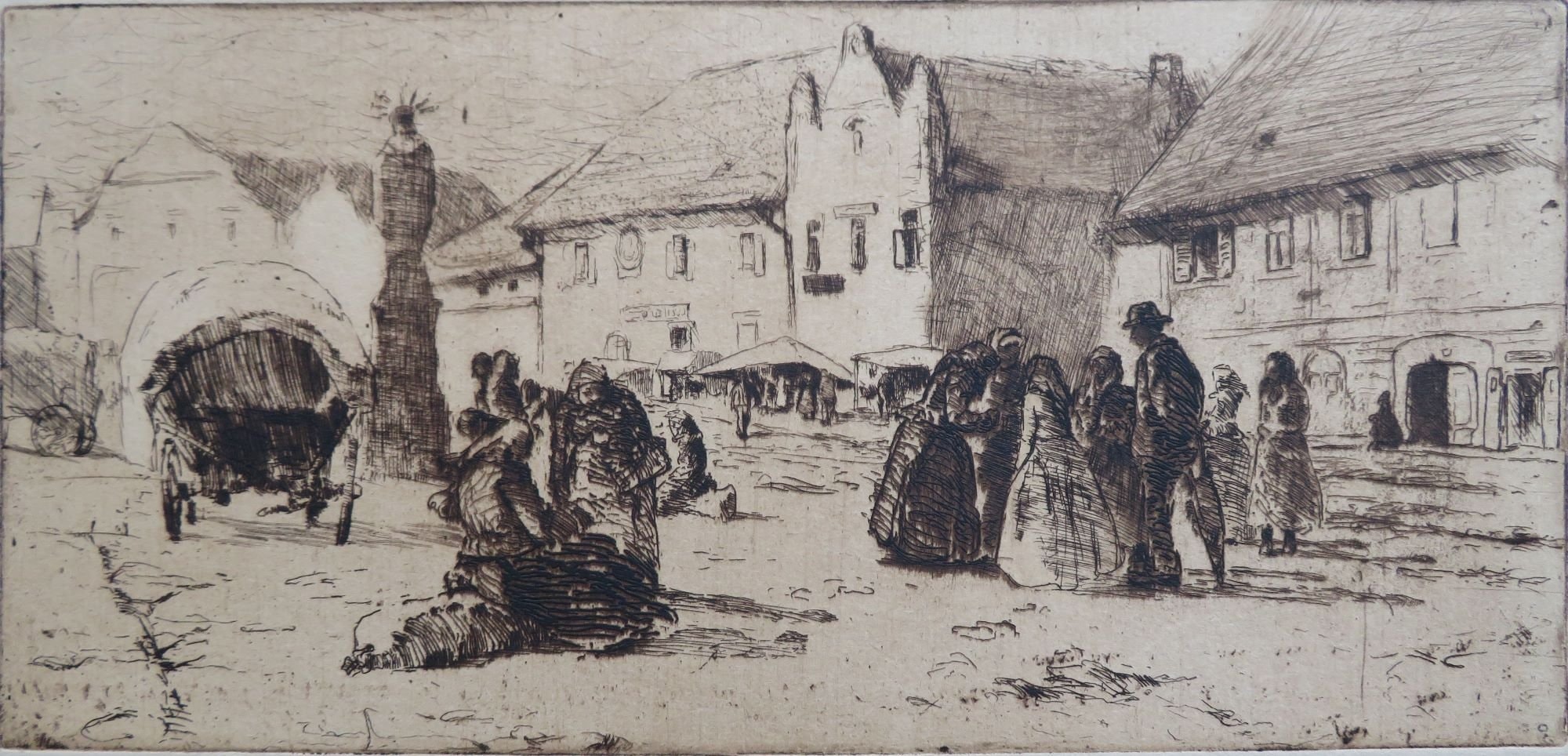Max Pollak
Max Pollak
(1886, Praha – 1970, Sausalito, USA)
 Max Pollak byl malíř a grafik, narozený v Praze vyrůstal však ve Vídni, kde také studoval na Akademii výtvarných umění. Již od mládí podnikal cesty po Evropě i mimo ni. Ve svých grafikách zachytil krajiny a města Česka, Rakouska, Německa, Itálie, Palestiny, USA, Mexika či Guatemaly. V roce 1907 putoval Moravou a Dolním Rakouskem, některá města ztvárnil ve svých jemně cizelovaných leptech.
Max Pollak byl malíř a grafik, narozený v Praze vyrůstal však ve Vídni, kde také studoval na Akademii výtvarných umění. Již od mládí podnikal cesty po Evropě i mimo ni. Ve svých grafikách zachytil krajiny a města Česka, Rakouska, Německa, Itálie, Palestiny, USA, Mexika či Guatemaly. V roce 1907 putoval Moravou a Dolním Rakouskem, některá města ztvárnil ve svých jemně cizelovaných leptech.
Během první světové války působil jako oficiální válečný umělec rakouské armády. V letech 1914–1915 zdokumentoval života v židovském uprchlickém táboře v Mikulově. V jeho tvorbě se výrazně uplatnila také portrétní malba. V roce 1924 odcestoval s manželkou do New Yorku, odkud podnikali další umělecké cesty. Pollakovy městské scenérie a krajiny si brzy získaly uznání odborné veřejnosti. Jeho díla jsou dnes zastoupena ve sbírkách předních světových muzeí.
Max Pollak war ein Maler und Grafiker, der in Prag geboren wurde und in Wien aufwuchs, wo er auch an der Akademie der Bildenden Künste studierte. Schon in jungen Jahren bereiste er Europa und darüber hinaus. In seinen Grafiken hielt er Landschaften und Städte aus Czech, Österreich, Deutschland, Italien, Palästina, den USA, Mexiko und Guatemala fest. 1907 reiste er durch Mähren und Niederösterreich, einige Städte aus hier er in seinen fein gemeißelten Radierungen darstellte.
Während des Ersten Weltkriegs arbeitete er als offizieller Kriegsmaler für die österreichische Armee. In den Jahren 1914 und 1915 dokumentierte er des Lebens im jüdischen Flüchtlingslager in Mikulov. Auch die Porträtmalerei spielte in seinem Werk eine bedeutende Rolle. 1924 reiste er mit seiner Frau nach New York, von wo aus sie weitere künstlerische Reisen unternahmen. Pollaks Stadtszenen und Landschaften fanden bald Anerkennung beim Fachpublikum. Seine Werke sind heute in den Sammlungen führender Museen auf der ganzen Welt vertreten.
Max Pollak was a painter and graphic artist who, born in Prague, but grew up in Vienna, where he also studied at the Academy of Fine Arts. From a young age, he travelled throughout Europe and beyond. In his graphics, he captured landscapes and cities from Czech, Austria, Germany, Italy, Palestine, the USA, Mexico, and Guatemala. In 1907, he travelled through Moravia and Lower Austria, some of the towns from here he depicted in his finely chiselled etchings.
During the First World War, he worked as an official war artist for the Austrian army. In 1914–1915, he documented life in the Jewish refugee camp in Mikulov. Portrait painting also played a significant role in his work. In 1924, he travelled with his wife to New York, from where they undertook further artistic trips. Pollak's urban scenes and landscapes soon gained recognition from the professional public. His works are now represented in the collections of leading museums around the
